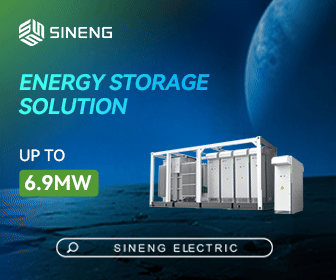Hillcrest's ZVS Traction Inverter Prototype Targets Cost Efficiency and Compact Design for EV Applications
Hillcrest Energy Technologies Ltd. (CSE: HEAT) (OTCQB: HLRTF) (FSE: 7HI) is pleased to announce that its Zero-Voltage Switching (ZVS) traction inverter prototype is expected to provide cost efficiency, offering significant savings for electric vehicle (EV) manufacturers.
According to recent analysis conducted by IDTechEx analyzing electric vehicles (EVs) from 2013 to 2023, there is a clear trend toward a significant reduction in die area per kilowatt (kW) of power. This trend underscores the industry's focus on producing smaller, more efficient and cost-effective inverters to meet the demands of next-generation EVs.
The IDTechEx analysis reviewed power density advancements across various EV models, including the Toyota Prius, Polestar 2, BMW i3, and Kia EV6. Based on this data, IDTechEx projects that, by 2035, many EV inverters will achieve a die area per kW below 4 mm². Hillcrest's ZVS traction inverter, however, has already surpassed this future benchmark at 3 mm²/kW.
Die area per kilowatt refers to the physical area of the semiconductor dice (or chips) in the inverter that are required to handle a certain amount of power, measured in kilowatts (kW). In simpler terms, it's an indicator of how efficiently the inverter's semiconductors are used.
By achieving lower die area per kilowatt, Hillcrest's ZVS traction inverter is optimizing the physical semiconductor area required for power handling. This innovation reduces material use and costs, while Hillcrest's high-efficiency design can cut energy losses, improve performance and extend the lifespan of EV systems—further lowering operational costs for manufacturers and consumers alike.
"Our ZVS technology not only enhances efficiency but also enables substantial cost savings, underscoring Hillcrest's commitment to high-performance, cost-effective power electronics for EVs," said Don Currie, CEO of Hillcrest Energy Technologies. "The knowledge gained from demonstrations and discussions with potential customers and development partners is invaluable. In many cases, cost savings and design are just as important as performance—a fact Hillcrest has listened to and delivered on with our ZVS innovation. By significantly reducing electromagnetic interference (EMI) and eliminating switching losses, our inverter offers manufacturers both a cost and design advantage in EV power systems."
The 350 kVA Silicon Carbide (SiC) inverter prototype, integrated with Hillcrest's proprietary ZVS technology, is expected to offer automakers a competitive edge in cost-effective design. Its efficiency and low EMI design facilitate simpler cooling and lower-cost shielding, contributing to overall savings and enhancing the value proposition for EV manufacturers striving for more affordable and efficient designs.
The IDTechEx webinar and related research report can be found here: The Future of EV Powertrains: SiC, GaN, and the Evolution of Power Electronics : IDTechEx Webinar
Hillcrest Energy Technologies | https://hillcrestenergy.tech









